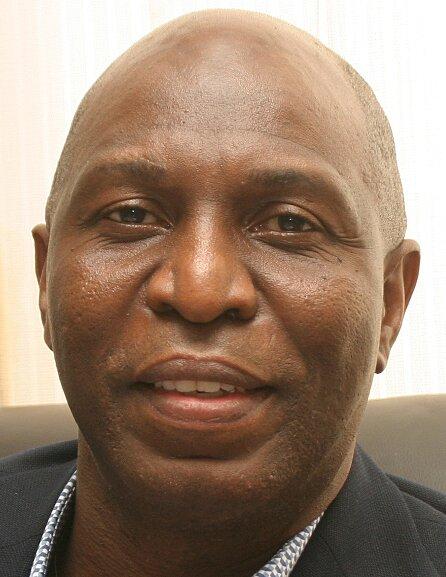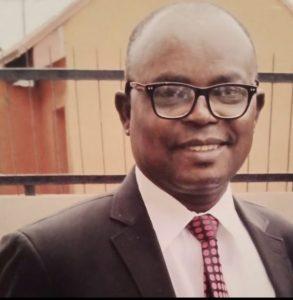He strode into the high-rise with the superfine dignity of a billionaire builder, father of four, husband, friend of many, child of prophecy, international explorer, a former hustler turned refined hustler, a former retailer of suits and shoes, a former habitue of the low-slung neighbourhoods of Lagos, a dynamo in health and hope.
But he left among ruins. He was a ruin himself, his whole body’s clock at an end. He was lifeless as the rods and blocks that were, not long ago, a showcase of magnificence and snob.
Those who saw the 21-storey heft and now see the surviving two could not do so with the impudence of a hat on the head. The hat or cap doffs by dropping off without a curtsy or the obliging hand of the wearer.
It was the character of artificial catastrophe. It intrudes for blood, like a slinking lion. It does not always warn like a tornado or hurricane. Nature, with all its Luciferian majesty, would often temporise before making everything temporary on its path. Conrad calls it “the unthinking might of nature.” Yet, it seems to think before it devours. But what man builds erupts, like an electric shock, a car crash or aircraft explosion or a building swooshing down on Gerrard Road Ikoyi. Or the 12-storey crash in Florida in June, or fire storms in England, etc.
That was the feat and fate of Femi Osibona before death caught him. He went home before he built his dream home. He left the block and made a turn. He held a meeting with another man who made a turn. Bob Oseni, a United States resident, also like Osibona, rose in the humble ambience of Lagos before his father clasped him. Both futures ended when they made the turn. Death stalked. They got stuck, forever. Just like Emily Dickinson’s poem: “Because I could not stop for death/ He kindly stopped for me/ The carriage held but just ourselves/ And immortality.”
What if it happened after he had left? A superstitious nation would have crucified him. He went there for the final rite of sacrifice. The dead died for him so he could prosper more. Some had even started such grumbles before the emergency workers rescued him from the rubble. They would add: he shouted hallelujah in his closet.
But if the tower fell without him, how would he have lived? A life of absolution, trying every day to atone for the dead souls? Film star Alec Baldwin faces it today after his gun liquidated a person on set. That was the desperation of Lord Jim, in Joseph Conrad’s epic novel, who surrendered his life to redemptive heroism for failing to save pilgrims on a ship. Or Addison Graves in the Booker Prize-nominated novel, The Great Circle by Maggie Shipstead, about a captain who saved himself and his twins instead of dying with others on deck.
With Osibona gone, no one can allude to a demoniac soul. We saw him on the deck dancing with others in near ecstasy in a church service. If he survived, his detractors would call that church service his rite of sacrifice, his dance a deathly romp.

He was no stranger to high-rises. He did it in England, South Africa, United States. The tiff over whether it was 15 floors or 21 draws one back to his interview with the ebullient TVC Business news anchor Tolu Ogunjobi when he referred to two projects where the British regulators documented an extra floor than he applied for. In that interview, he came across as a man of good intention and ambition, and referred to his relations with the Lagos State government. He said the BOS of Lagos, Babajide Sanwo-Olu, facilitated his work so long as they conformed to the law. So, he did not come across with the air of a man who cuts corners.
On LASBCA boss Gbolahan Oki, my investigation showed that he gave an interview to the News Agency of Nigeria, and was trying to deny when his bosses asked him why he misled the public. He denied he gave such an interview until NAN managing director said they had him on tape. He was suspended afterwards. Deputy Governor Femi Hamzat, not known for flimsy talk, clarified that 21 floors was approved. Many documents are flying around. The internet installs its own reality, conjuring voices, pictures and videos. A distorted universe of names suffuses the air. VP Osinbajo effused a spirited rebuttal. We cannot rely on unauthenticated material. Journalism beckons and thrives on rigour, not impulse. Not the rants of social media rats.
Governor Sanwo-Olu cut short his trip abroad and promptly set up a panel to investigate the matter. We ought to await the result, rather than burst into a claptrap of tattle tales based on ill-digested rumours, speculations and half-truths. Osibona had easy access to Lagos officials. It did not take much hassle to apply and secure 21 storeys.
Yet a question remains: what were the materials used for the building, and did Osibona hire the right people? Did anyone cut corners? Did he and his officials take some precautions for granted? Did the officials monitor?
Nigeria abhors standards. A house of otherwise great architecture yields paint tone uneven, the eaves unaligned, the doors breathing out sawdust, the toilet emitting noisome odours, the wiring propagating sparks, etc. A marvel becomes a whited sepulchre.
Little errors like that are ingredients of blood and tears. We saw My Pikin and its death trails. Dora Akunyili was an avenging angel of standards mowing down corporations, gangsters of fakes and titans of cozenage. JAMB Registrar Professor Is-Haq Oloyede lamented in an interview with me on TVC that the worst culprits of exam fraud and certificates are the parents. We poohpooh integrity, even in pursuing the rule of law like the raid on the home of a Supreme Court justice, Mary Odili. The attorney-general’s tongue wobbles in self-defence.
Lagos was a spectre of funereal ache as dead after dead, over 40, came out of a mighty ruin. What shall we say of the survivors, about nine, the one who just walked out, the lawyer who could not meet the duo of Osibona and Oseni and who must worship his flat tyre, or the fellow who escaped a swooping elevator by an inch? What of the assistant waiting to wed, or the family members wailing outside even as they heard anguished voices wailing inside the rubble?
One can wonder about high-rises, especially in a place like Ikoyi where single houses yield for phallic structures as species of capitalism. It’s three Cs are cars, condos and credit cards. We are making condos without credit. We sully its temple: we pay cash. But we cannot escape the high-rises. The fallen structure must rise again, or we surrender. Osibona might have erred but he left a legacy of towers. A structure must rise out of the ashes. Just as Shakespeare wrote in The Tempest: “Nothing of him that doth fade/But doth suffer a sea-change/ Into something rich and strange.” Shakespeare invented the phrase sea-change. Here we call a scene-change. Or else we will make Osibona’s legacy that of Ibsen’s play The Master Builder about a man so obsessed with building a tower that he crashed to his death after climbing it.
We did not want November 1. But let not the tragedy be in vain. So, we must make sure it never reoccurs. Let’s move forward with great housing projects for rich and poor. The BOS of Lagos has the sane head to push us beyond this sad day. – Sam OMATSEYE.


















